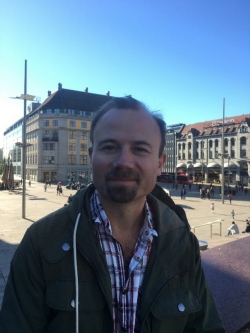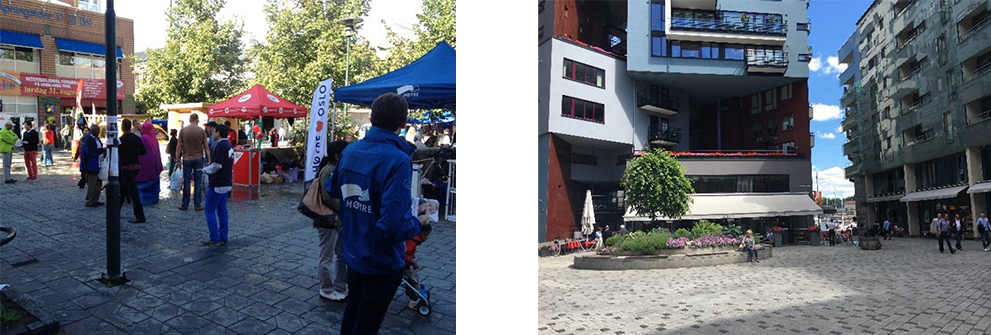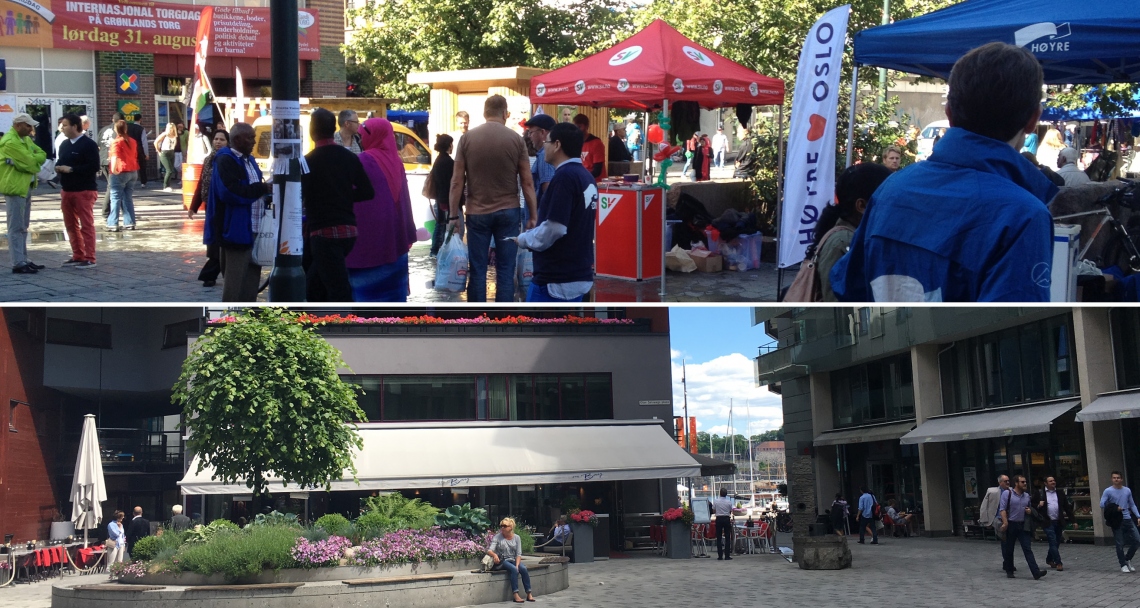Urban chance encounters
28. March, 2022
Sverre Bjerkeset defended his PhD thesis ‘HELLO, STRANGER? Urban public space between interaction and attraction’ at AHO on June 9th, 2021.
By Vilde Malmberg Gimming
Bjerkeset is a social anthropologist from the University of Oslo (UiO) and has an executive master's degree in urbanism from AHO. Previously, he has worked for many years with international educational and research collaboration at UiO. After the part-time study in urbanism, and with an increased interest in urban development and urban issues, he applied for and obtained a PhD position at AHO.

Sverre Bjerkeset
The dissertation ‘HELLO STRANGER?’ bears the sign of Bjerkeset's professional background in social anthropology in the encounter with key urban issues. Chance contact between strangers is often celebrated as an important, civilizing aspect of city life, Bjerkeset writes. The rise in privately owned public spaces, tending to displace people, activities and exchanges that do not fit in and may threaten business interests, has thus raised broad concerns. In his dissertation, he examines how such ‘new’, prestigious public spaces differ from more ‘traditional’, everyday ones, in terms of the frequency of peaceful, spontaneous face-to-face interactions among strangers. His interest in the topic arose during a fieldwork done as part of the master study in urbanism:
"I was struck by the differences between two public spaces in central, mixed-use areas of Oslo, Grønland torg and Smalgangen at Grønland, and parts of Odden at Tjuvholmen, in terms of number and types of strangers’ interactions. Differences in urban context, neighbourhood profiles and management regimes obviously played a role. However, I quickly realized that a broader understanding of the mechanisms behind required more extensive research."

Grønlands torg Olav Selvaags plass (Tjuvholmen)
Prestigious versus everyday public spaces
Bjerkeset writes that the two extreme cases of his study are starkly contrasting sites that shed light on important differences between prestigious and everyday public spaces. At Tjuvholmen he found that interaction between strangers occurred sporadically and episodically, at Grønland on a more regular, recurring basis. The difference is largely due to differences in what he calls contact-inducing circumstances. That is, circumstances which spur people to approach others (‘opening positions’), make people accessible to others (‘exposed positions’), or open up to mutual contact (‘mutual openness’).
Attraction over interaction?
The difference between traditional and new public spaces; with regard to spontaneous social contact, Bjerkeset links, among other things, to a neoliberal shift in urban policy and urban planning:
"In this shift, a market-driven, but also fairly conventional notion of attractiveness in the physical and social environment takes center stage in prestigious urban developments, at the expense of the disordered exchanges of everyday life."
Bjerkeset points to the private public space's strict management and the absence of unwanted others, such as beggars, recruiters, activists, and street musicians, as a reason for a low incidence of chance interaction. The absence of the welfare state and civil society also means that institutions that house and serve disadvantaged - often contact-seeking - individuals, are missing. Also, regulars are missing. Since the area is largely oriented towards visitors, there is an absence marked of low-profile, informal meeting places. An elevated price and prosperity level also work to their disadvantage.
Politicians and urban planners alike claim to create public arenas for a diverse population to meet and interact. If one really wants to achieve the latter, it is important to be aware of the circumstances from which such contact springs, Bjerkeset writes. He hopes that the dissertation can contribute to a more nuanced understanding of and discussion about urban public spaces and their diverse activities and social interactions.
Read the thesis "Hello, Stranger? Urban Public Space between Interaction and Attraction" digitally here.
